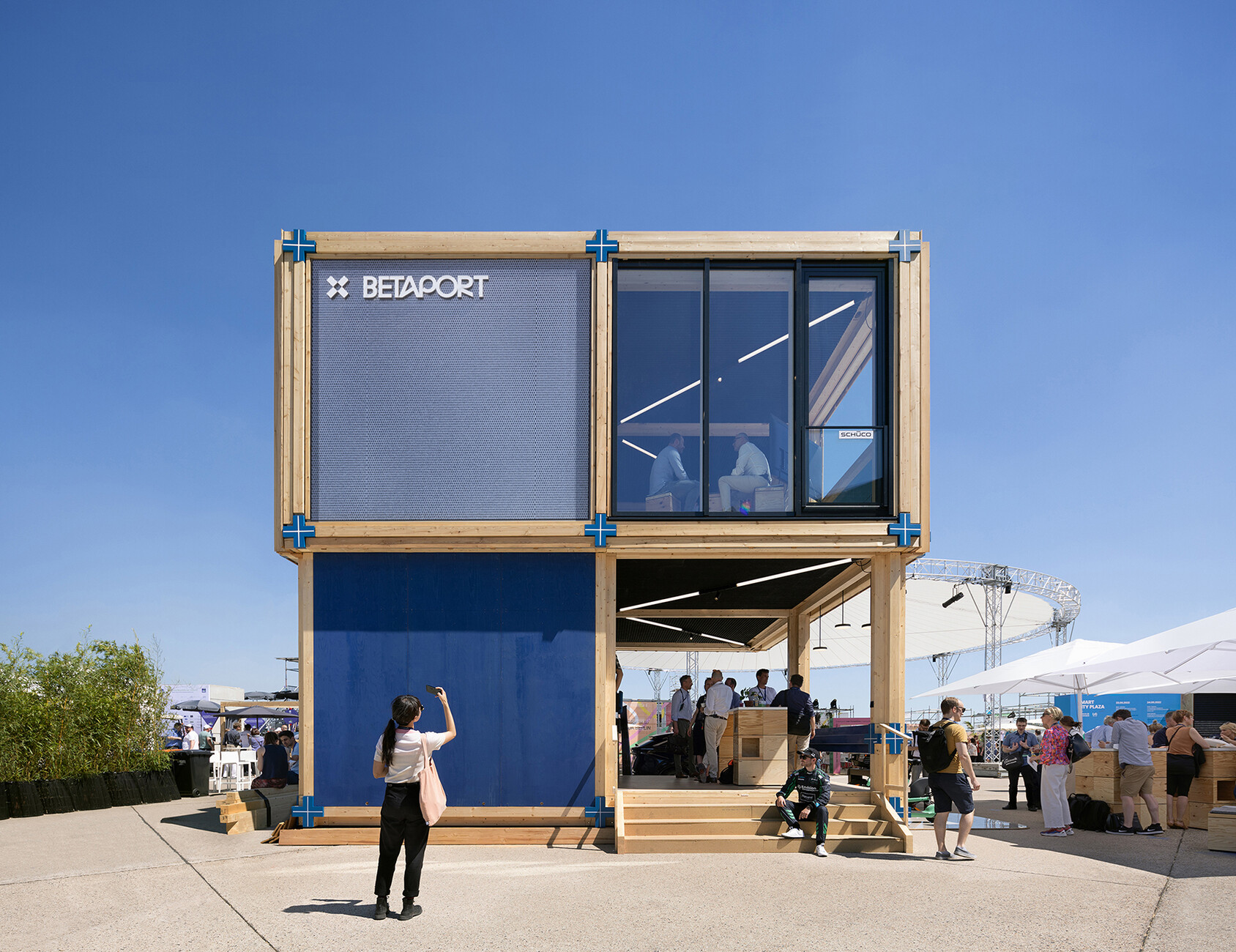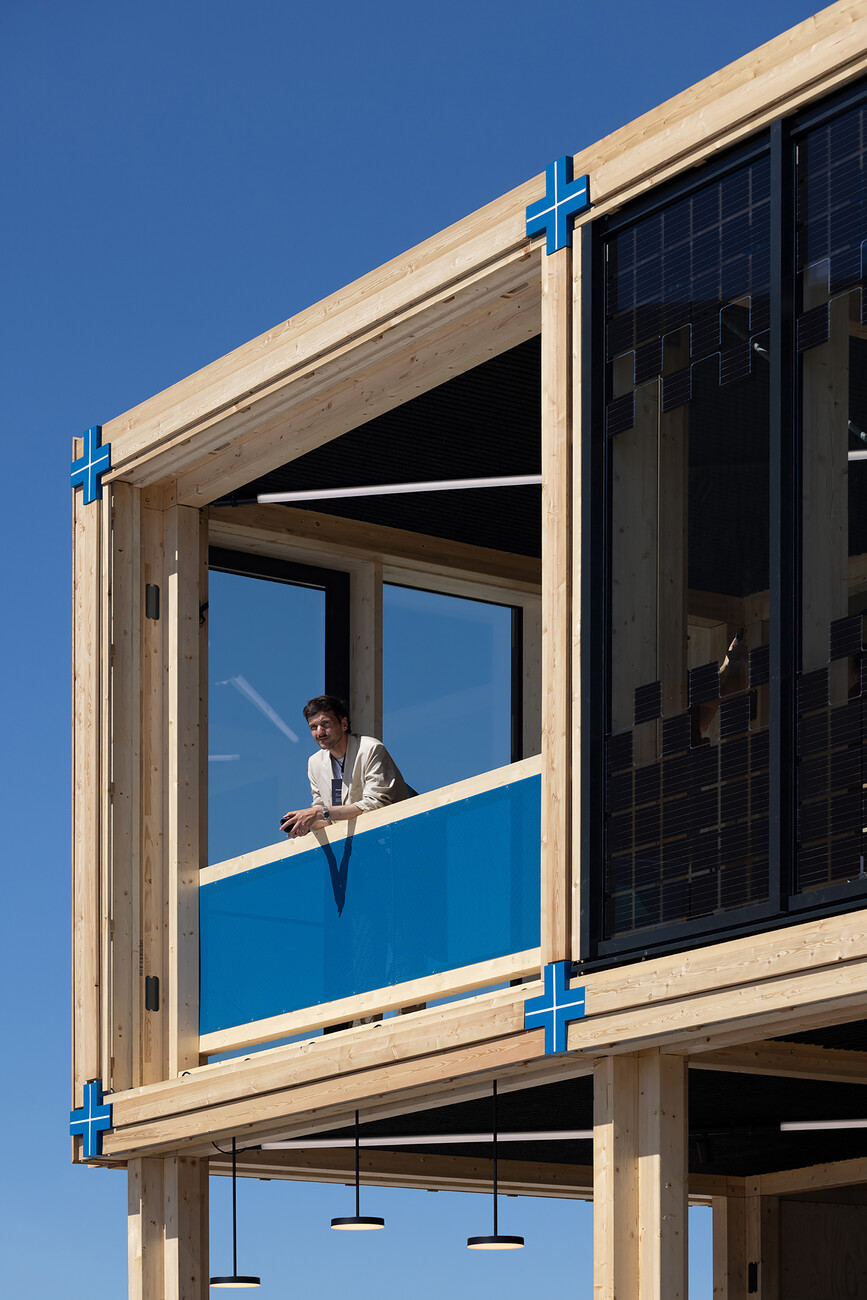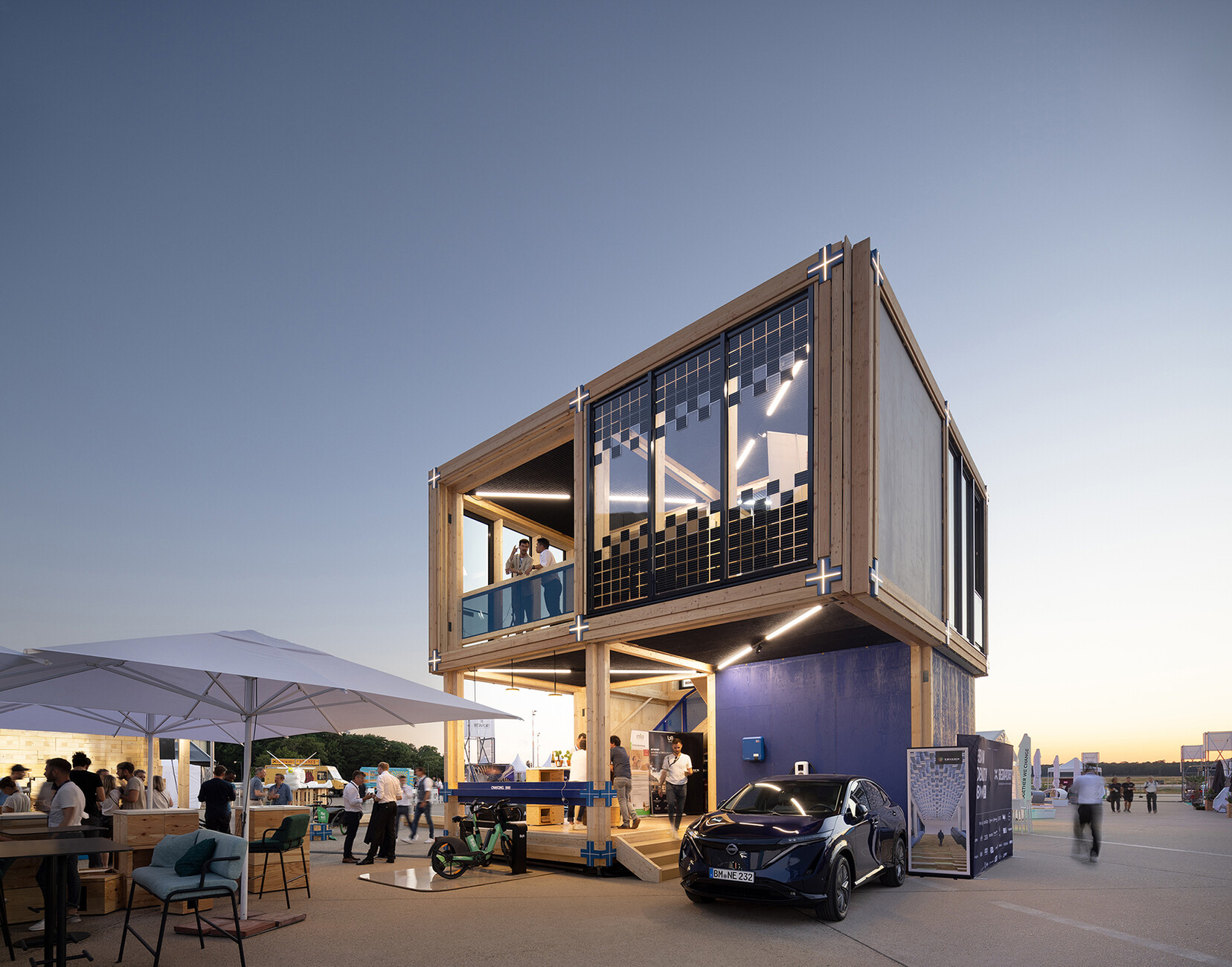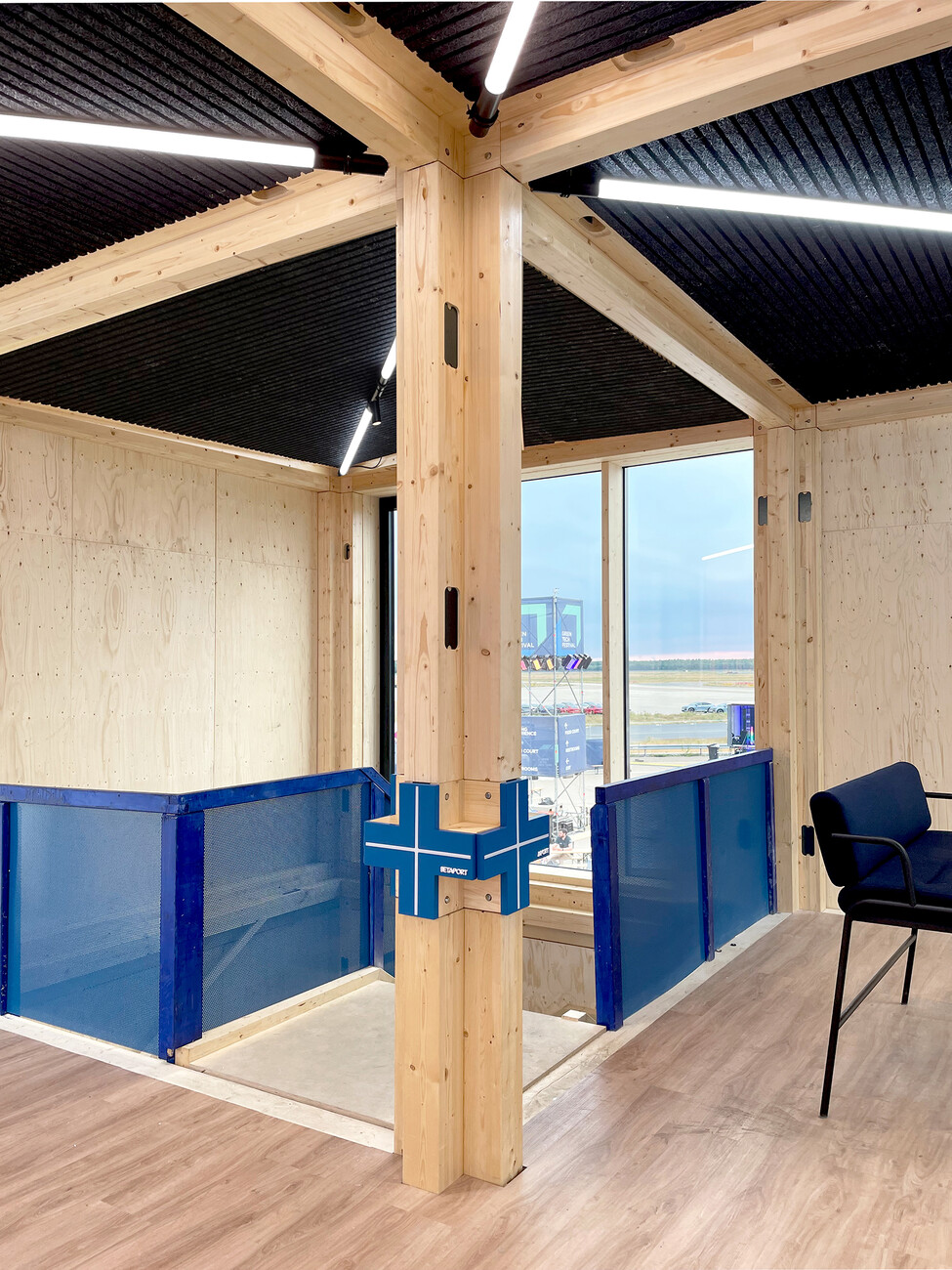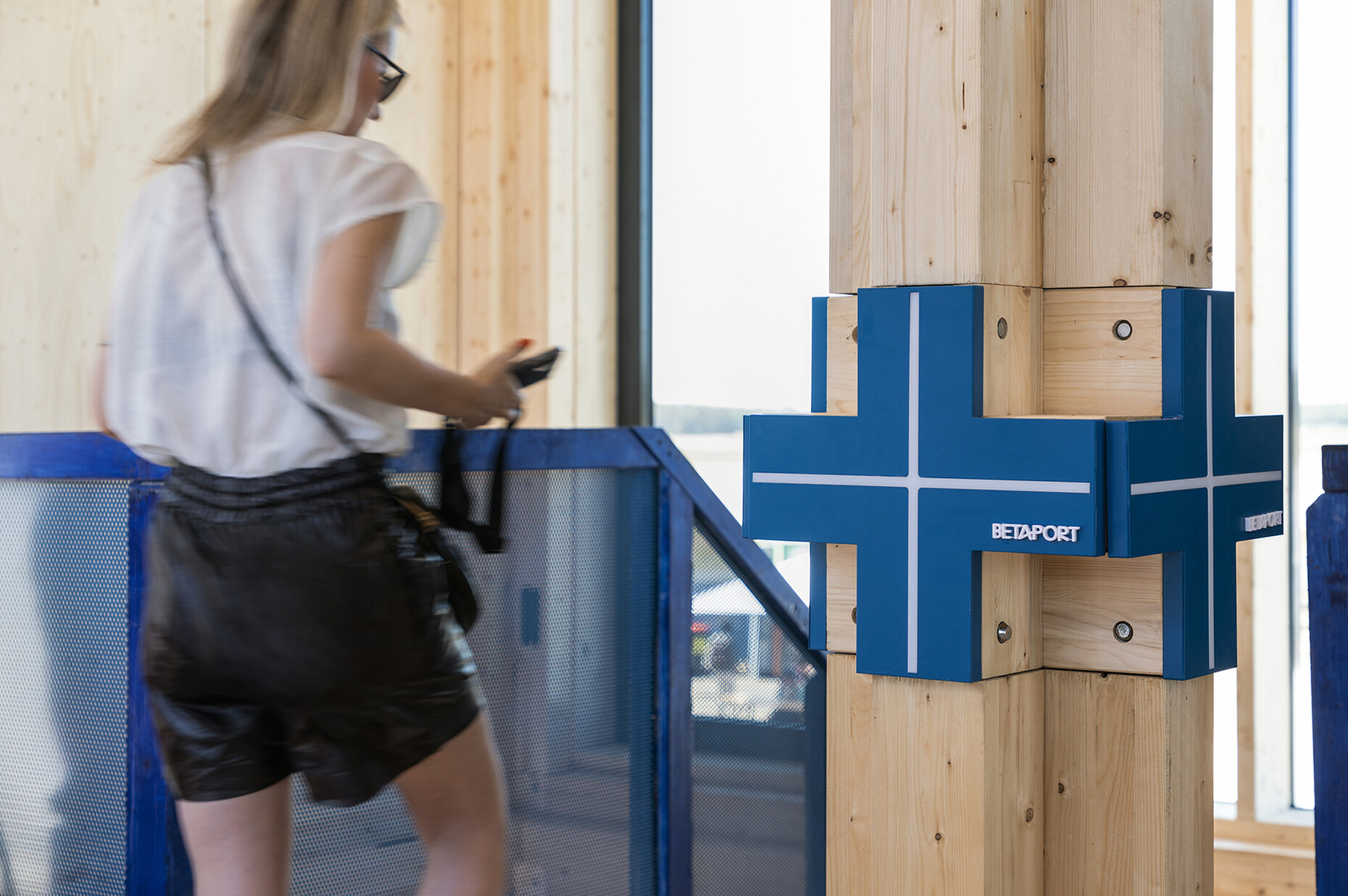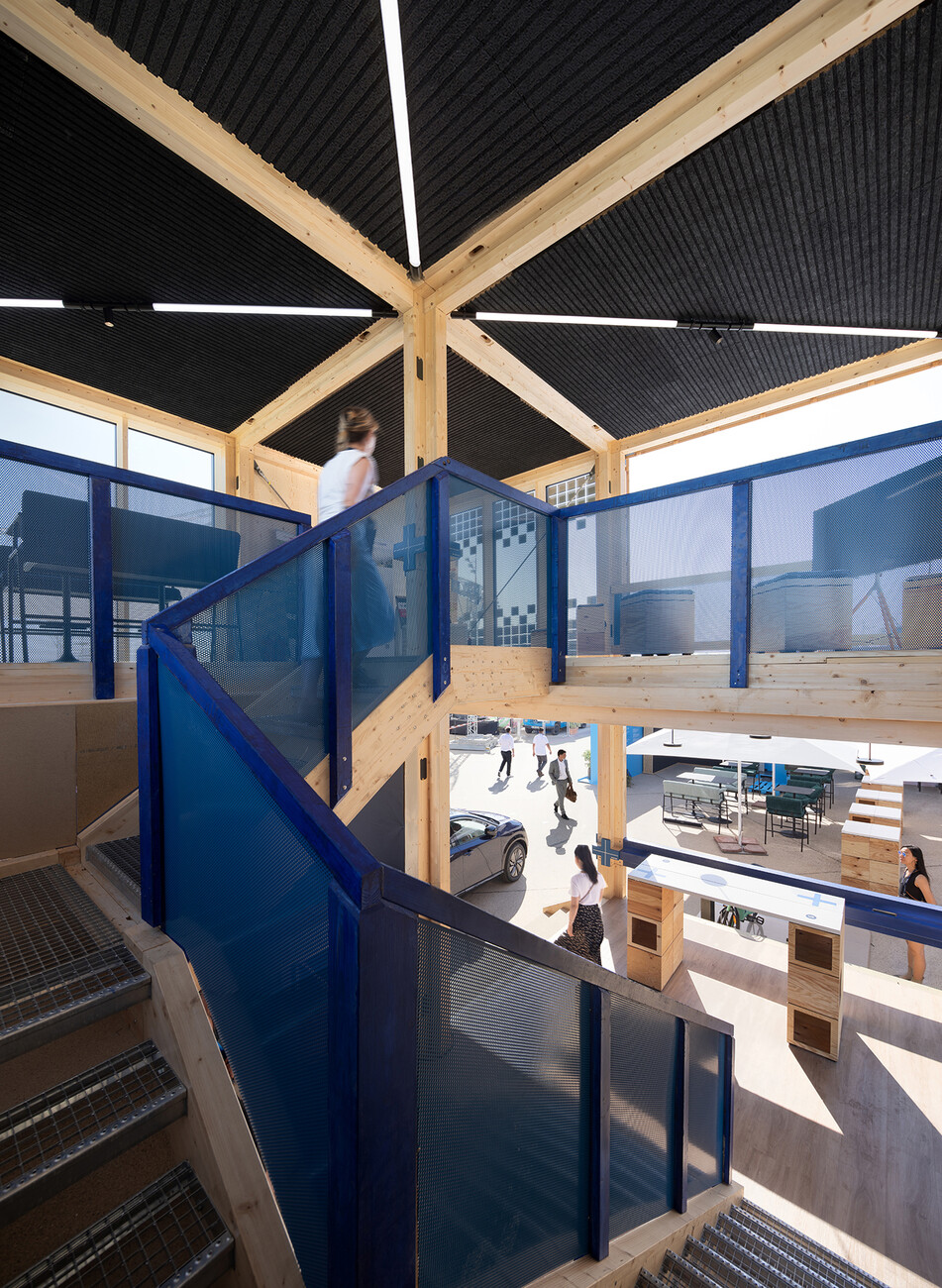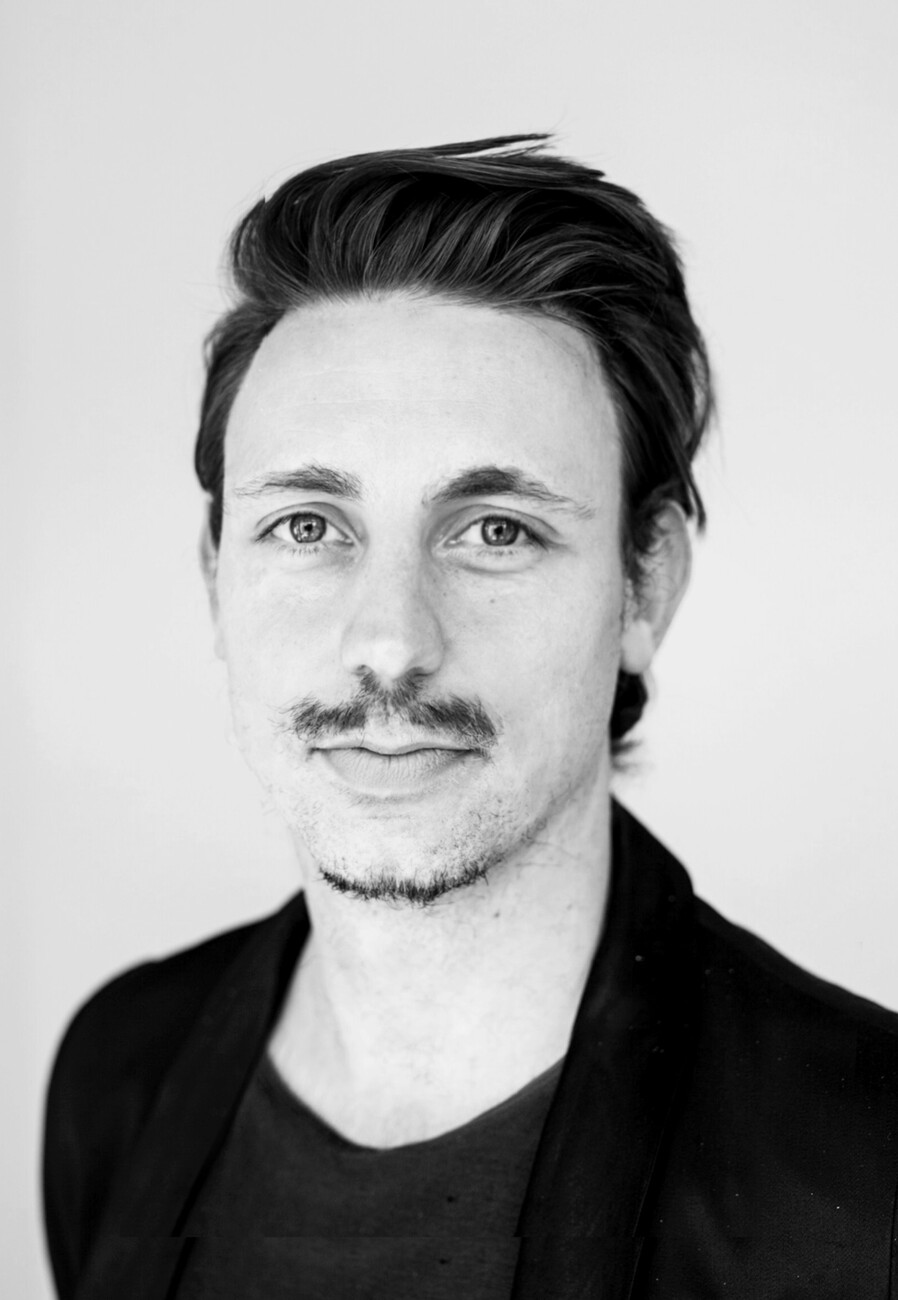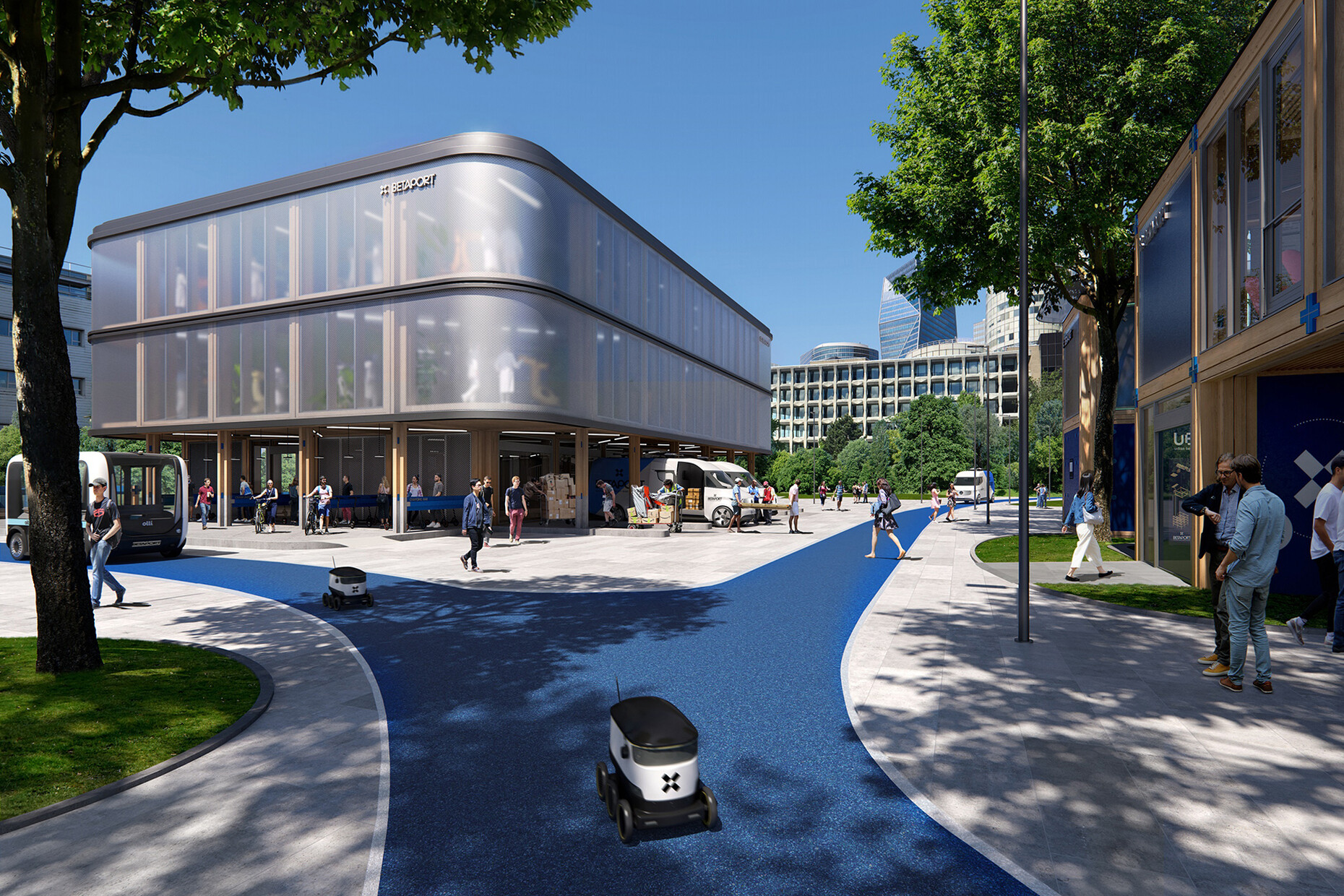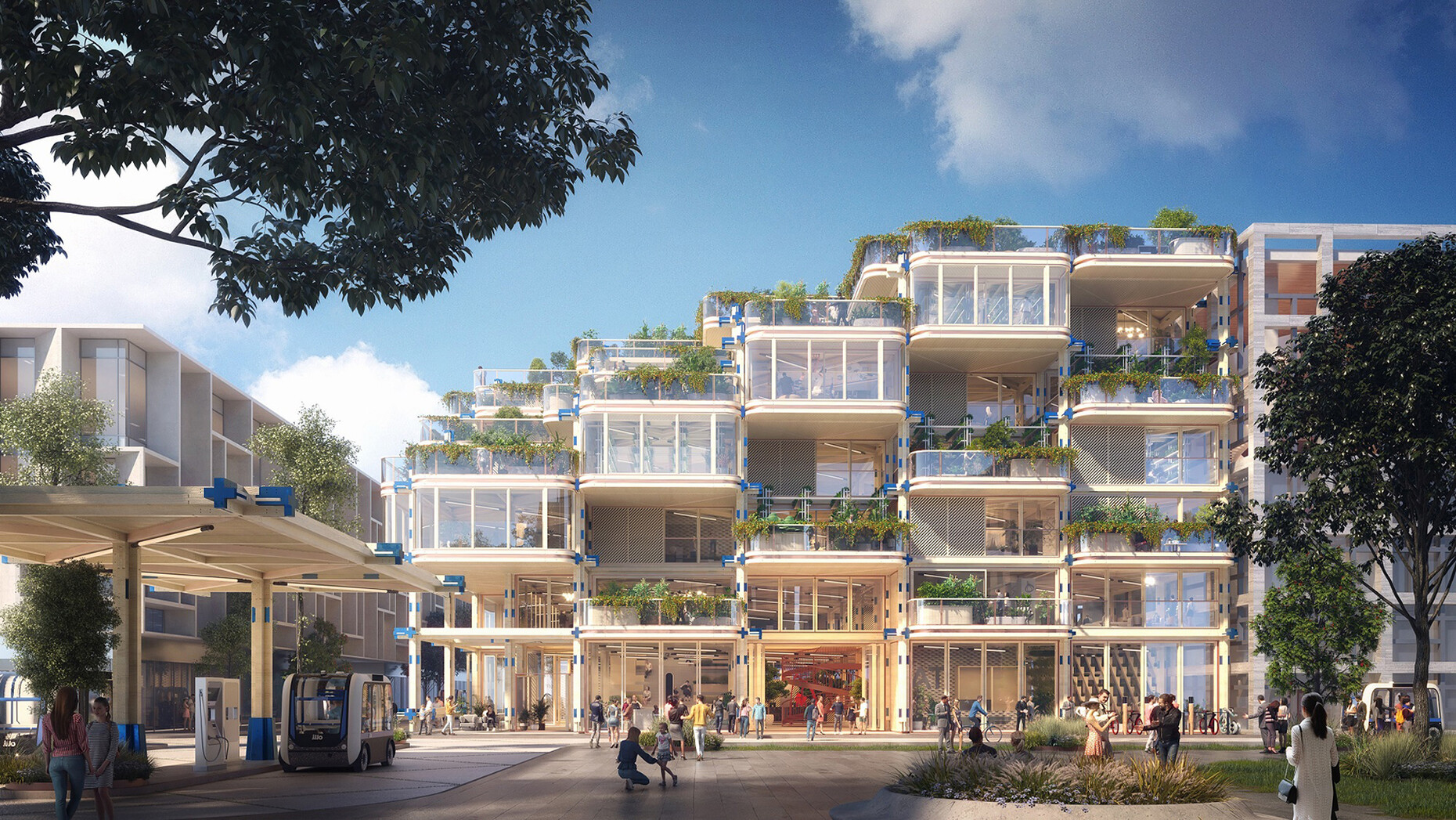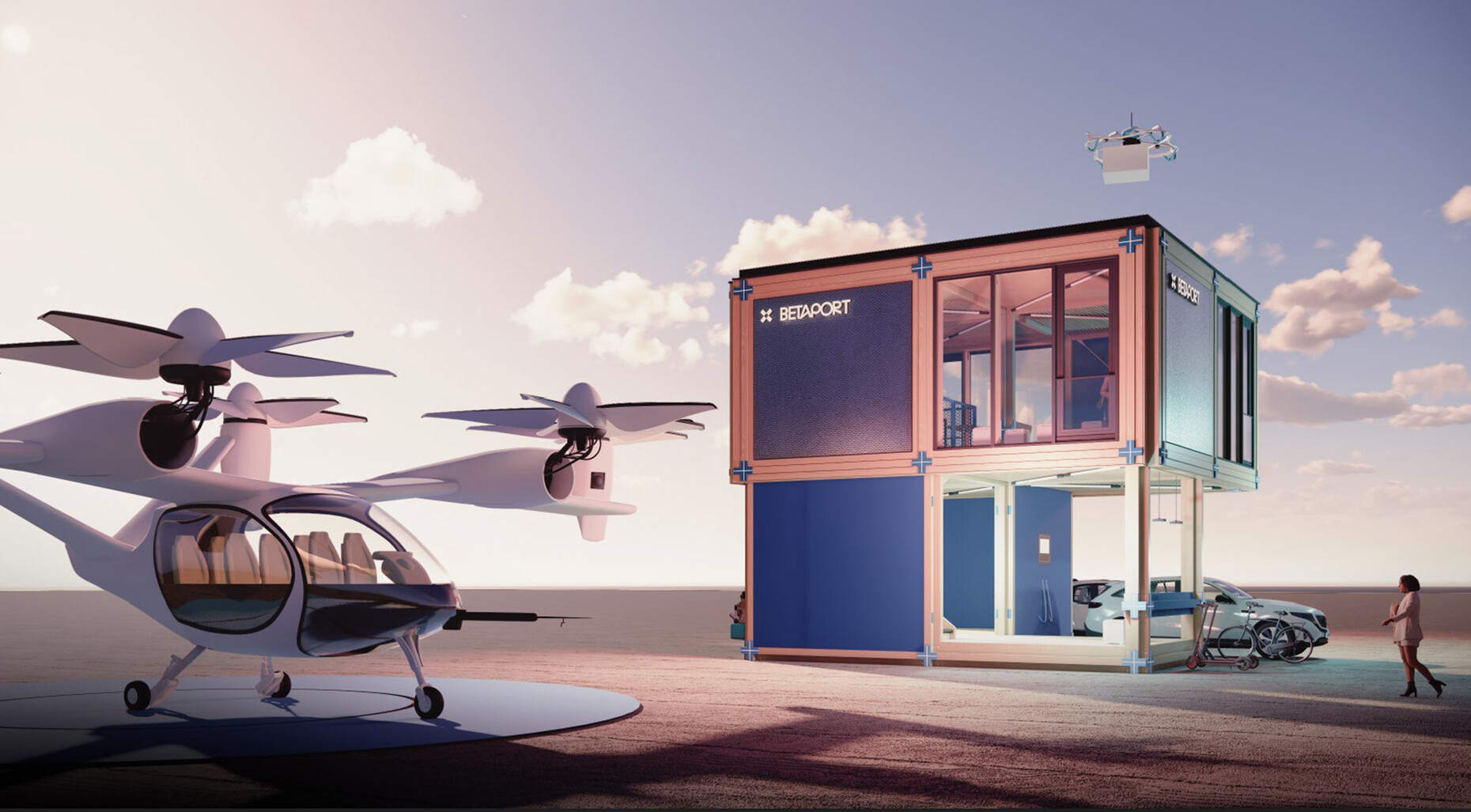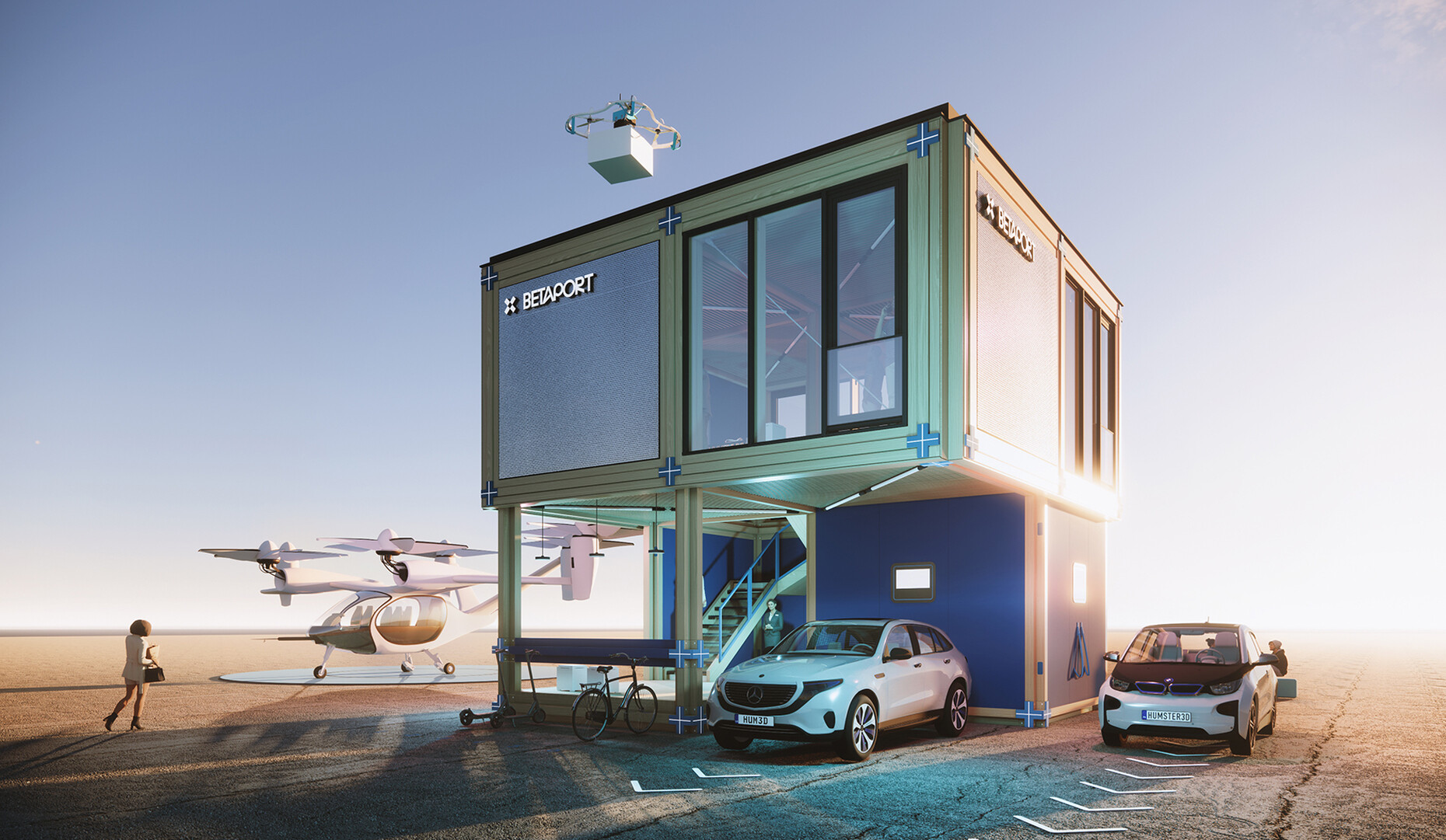SUSTAINABILITY
To be continued
Simone Kraft: You promise to deliver integrated, innovative, transformative building systems using social inclusion and participative design. What exactly does this mean?
Marvin Bratke: Our approach to spatial design boasts a number of innovation factors in terms of technology, economy and social-mindedness. We design spaces as open systems, as expandable constructs that can grow with us. To this end, we start at the level of the digital systems and software – we develop the kind of automation and digital tools that allow for a holistic, forward-looking approach to planning. This means fewer interfaces and cost certainty for everyone involved in the project planning and makes for greater efficiency. This is obvious in all our projects, particularly, of course, our BetaPort building system – building technology for circular, mutable buildings that can be changed or dismantled with low energy inputs and low carbon emissions required.
Before we start discussing your BetaPort building system, could you give us an idea of how forward-looking planning works for you? How do you come up with ideas?
Marvin Bratke: We get our ideas from all kinds of sources. We design as a collective and set our course at an early stage, so that we won’t have to make adjustments later on. We are forever building ourselves all kinds of aids to help us, be they using generative planning tools, AI tools, or construction kits for parametric design. Ideas are the result of discussions. It is very important to us to promote dialog – indeed, our designs consciously remain in the beta mode and are never complete. Our designs, planning, and innovations pass through digital and analog feedback loops with participants from various disciplines. These make for a certain safety mechanism by means of which the designs and planning are thoroughly investigated from all angles and put to the acid test. That constant beta mode test.
The beta mode means everything to you, literally – not only is it in the name of your bureau, it also links up all the projects in your Urban Beta cosmos. What does it mean?
Marvin Bratke: We borrowed the word “beta” from the videogame industry and we are in a constant beta mode, we are never finished, change is in the DNA of our buildings and designs. This is plain to see in our BetaPort system, which allows for buildings to be dismantled and altered, making them better equipped for a future which is constantly changing. Inspired by open systems that activate plug-ins, extensions, pluralist action, and swarm intelligence, we have an unconventional way of looking at our work. The “urban” bit of our name is, in turn, taken from our architectural, urbanist approach to things. Here we reference our roots, our ability to create a transformative building, one that makes a genuine social impact. Spatial innovation at all levels is in our blood and we see this as the driving force behind what we do.
What is it that makes the BetaPort revolutionary?
Marvin Bratke: Our BetaPort system is the first circular, modular building system for sustainable commercial buildings on demand. We offer adaptive spatial systems which can be used flexibly and boast an “open source” mentality. This enables us to lock into new service-based models for buildings. What makes this possible is our Lego-like construction kit which allows buildings to be planned and erected not only rapidly, precisely and sustainably, but also with clear costing. Thanks to digital planning tools such as the Beta Builder, our configurator, we can guarantee simplified and automated planning chains with direct links to digital construction. The digital twins of our buildings can be optimized in Beta Builder via an easy-to-access web interface.
How will the BetaPort configurator work?
Marvin Bratke: Our digital design process is based on automation, something that minimizes errors during the planning, execution and construction phases, both in the factory and on the relevant site. The configurator serves as an interactive platform, actively and democratically involving everybody working on the project, the decision-makers, planners and users, in the planning process. This makes the design process interactive and participative. We are, in fact, not a construction firm but a technology company, one that develops and markets both those handheld parts for the user and the relevant software – similarly to the situation with iPhones, where there is both the device and the App Store. In future, the software will be more important than the hardware element. Our product is the holistic process chain from automated project development right up to the software-assisted return, re-processing, and recycling of our parts in a large number of buildings! In this context our licensees benefit from our tools, setups and technology. By using open processes, BetaPort fosters the democratization of the construction industry. To accompany this, we offer digitally produced manuals for buildings on all scales and all of all sizes, including customer-specific and made-to-order elements.
BetaPort was consciously developed following the principles of a circular economy.
Marvin Bratke: Correct. BetaPort was designed specifically in order to be taken down again. Every element has a materials certificate. It has reversible connections which allow for all the building materials to be dismantled, modified, and recycled. Our system is very easy to adapt, we can use it both for existing structures and for new builds. It is very important to reuse real estate that is already in place, to modify it – this is a basic requirement in today’s built-up environments. Nevertheless, we think ahead. Giving existing properties a new lease of life is a process that is cost, time and resource-intensive, since we are repurposing buildings that were for the most part designed for other functions and are equipped with outdated technology. Our system offers solutions for avoiding such problems in future, since we operate as an open system, the kind that allows for updates and has a facility for modification, extension and dismantling as part of its design. In this way, we keep our components and material cycles separate from the depreciation cycle of a building. Our building shell elements are good for more than 150 years, whereas a building in Europe lasts on average less than 50 years. Because of this uncoupling process, we are able to offer future generations more freedom and flexibility, without the complexity and intensive use of resources necessary for renovations today. We plan with repeatable lifecycles. At a figure of 38 percent, today’s construction industry is the main emitter of carbon pollution there is. At the same time, little research is conducted in the building sector and there is not much investment in innovations. Building is a complex process, it is extremely expensive, after all, every building represents a prototype – and since it involves a very large number of participants and the process chain is not normally digitized, the error margin in a building is usually relatively high. Strictly speaking we are erecting the kind of buildings that are so inflexible that by the time they are complete, they are obsolescent. These are a number of the points that we wish to address at Urban Beta.
How exactly does recycling BetaPort’s building components work?
Marvin Bratke: We agree to take back all the building components, to recycle them, and reuse them. This means that individual components can live on in a large number of buildings. In future, this will lower building costs. The cycle thus works automatically via our digital platform. And since every component is developed from renewable or recyclable materials as part of a modular system and furnished with a materials certificate, it can quickly be designed and built digitally – and, since we boast TÜV certification, we can build “portable buildings”, rapidly and without planning permission.
To this end, we develop micro-factories with modular, robot-driven platforms which can build locally and are linked up to our platform. A licensing model from which both our partners and we can benefit using our building technology is currently at the development stage.
One common problem with modular systems is the aesthetics, there have been a number of recent examples of this from past decades. How do you prevent everything from appearing interchangeable?
Marvin Bratke: In such cases the aesthetics are often connected with the façade. We collaborate with a number of different façade manufacturers as licensees and offer a product catalogue that can vary a great deal. We provide wooden, membrane and metal façades, including the kind with different openings for various purposes. We work in partnership, as our USP is providing the shell. Our library of components, which is part of our licensing model, is also being developed in parallel, and with every new building experience. It will also, in future, be available on our platform.
That provokes our curiosity about the brains behind the innovative concept. Who is behind Urban Beta?
Marvin Bratke: We four founders –Anke Parson, Florian Michaelis, Paul Clemens Bart and I – are architects and entrepreneurs with different backgrounds in product development, design and research, as well as in producing buildings. In other words, our experience covers the entire spectrum of the construction process. We actually met long before Urban Beta was established, in the course of various projects in which we collaborated in different constellations. The four of us then finally came together through the idea of temporary, mobile solutions for using the brownfield in Berlin for homeless hostels, a project that later developed into BetaHood. There are now six of us and we are still growing. We collaborate with a tightly knit group of employees and our strong partner companies from the construction industry, firms such as Schütt Holzbau, Trilux, Schüco, JUNG and Wago. For us, 2023 will be a year with upscaling potential and will combine planning with the completion of our first commercial BetaPort building.
You very recently launched Beta Realities UG. Where is it that BetaPort is now heading?
Marvin Bratke: BetaPort Systems GmbH, a company that handles development and marketing of our building technology and our construction system, has been in existence since the beginning of 2023. The relevant services in the field of design and architecture are to be found in Beta Realities – pronounced “Better Realities”. What we are aiming at here is a clear distinction between planning and building. This is part of our scaling strategy. There will be exciting new developments in the near future and we look forward to them!


